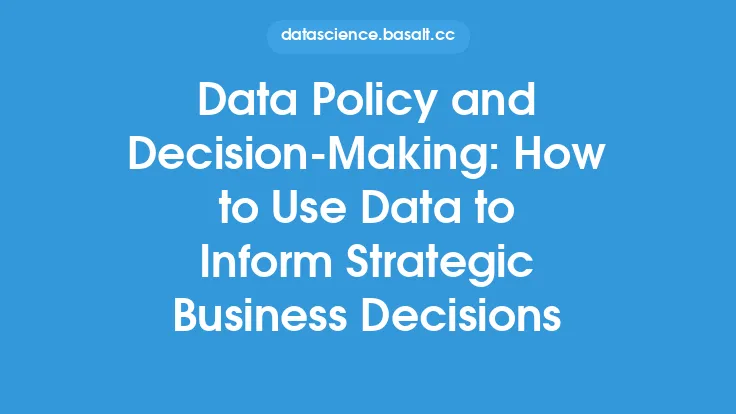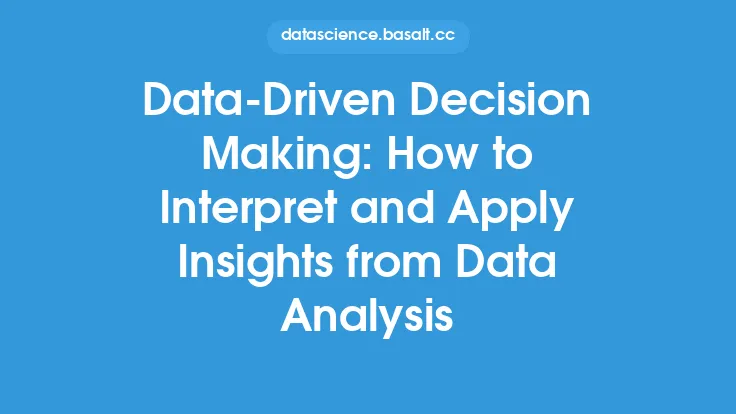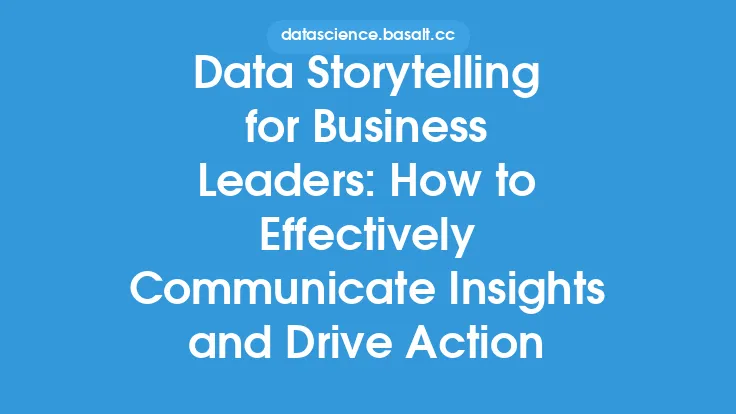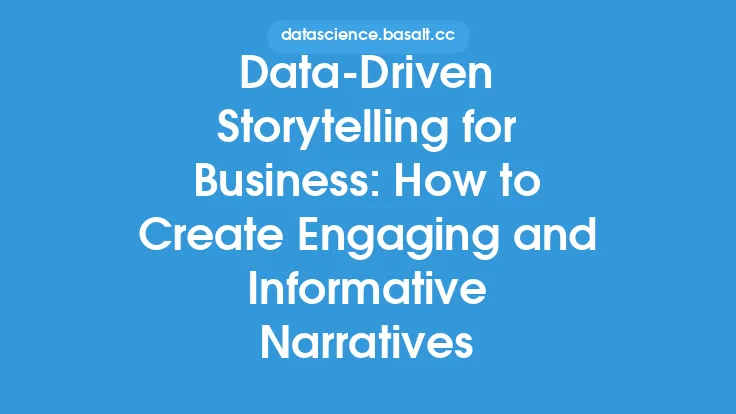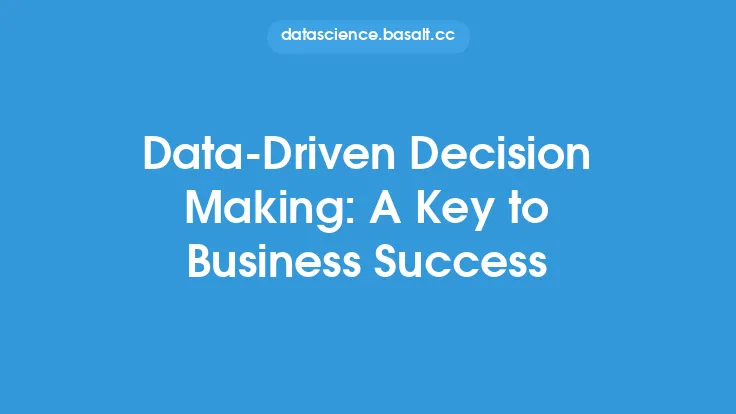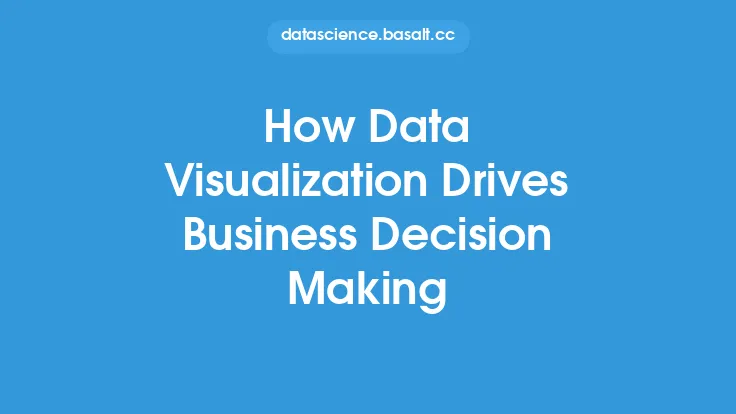In today's fast-paced business landscape, organizations are constantly seeking ways to gain a competitive edge and make informed decisions. One key strategy for achieving this is by leveraging data warehousing for business intelligence. A data warehouse is a centralized repository that stores data from various sources, providing a single, unified view of an organization's data. By harnessing the power of data warehousing, businesses can unlock valuable insights, drive decision-making, and ultimately, improve their bottom line.
Introduction to Data Warehousing for Business Intelligence
Data warehousing for business intelligence involves the process of designing, building, and maintaining a data warehouse that supports business intelligence activities. This includes extracting data from various sources, transforming it into a standardized format, and loading it into the data warehouse. The data warehouse is then used to support business intelligence tools and applications, such as reporting, analytics, and data visualization. By providing a single, unified view of an organization's data, a data warehouse enables businesses to gain a deeper understanding of their operations, customers, and market trends.
Benefits of Data Warehousing for Business Intelligence
The benefits of data warehousing for business intelligence are numerous. Some of the most significant advantages include:
- Improved decision-making: By providing access to accurate and timely data, a data warehouse enables businesses to make informed decisions that drive growth and profitability.
- Enhanced business insights: A data warehouse provides a single, unified view of an organization's data, enabling businesses to gain a deeper understanding of their operations, customers, and market trends.
- Increased efficiency: By automating the process of extracting, transforming, and loading data, a data warehouse can help reduce the time and effort required to support business intelligence activities.
- Better data governance: A data warehouse provides a centralized repository for an organization's data, enabling businesses to establish data governance policies and procedures that ensure data quality, security, and compliance.
Key Components of a Data Warehouse for Business Intelligence
A data warehouse for business intelligence typically consists of several key components, including:
- Data sources: These are the various systems and applications that provide data to the data warehouse, such as customer relationship management (CRM) systems, enterprise resource planning (ERP) systems, and social media platforms.
- ETL (Extract, Transform, Load) tools: These tools are used to extract data from the various data sources, transform it into a standardized format, and load it into the data warehouse.
- Data warehouse storage: This is the centralized repository that stores the data, such as a relational database management system (RDBMS) or a cloud-based data warehouse service.
- Business intelligence tools: These are the applications and tools used to analyze and visualize the data, such as reporting tools, analytics platforms, and data visualization software.
- Data governance policies: These are the policies and procedures established to ensure data quality, security, and compliance, such as data validation rules, access controls, and data retention policies.
Data Warehouse Architecture for Business Intelligence
A data warehouse architecture for business intelligence typically consists of several layers, including:
- Presentation layer: This layer provides access to the data warehouse for business users, via business intelligence tools and applications.
- Application layer: This layer provides the business logic and functionality for the data warehouse, such as data transformation and aggregation.
- Data access layer: This layer provides access to the data warehouse storage, via query and indexing mechanisms.
- Data storage layer: This layer provides the centralized repository for the data, via a relational database management system (RDBMS) or a cloud-based data warehouse service.
- Data source layer: This layer provides the various data sources that feed the data warehouse, such as CRM systems, ERP systems, and social media platforms.
Best Practices for Implementing a Data Warehouse for Business Intelligence
To ensure the success of a data warehouse for business intelligence, several best practices should be followed, including:
- Define clear business requirements: Establish a clear understanding of the business needs and requirements for the data warehouse, including the types of data to be stored, the frequency of updates, and the level of data granularity.
- Choose the right data warehouse platform: Select a data warehouse platform that meets the business requirements, such as a relational database management system (RDBMS) or a cloud-based data warehouse service.
- Design a scalable architecture: Design a data warehouse architecture that can scale to meet the growing needs of the business, including increased data volumes and user adoption.
- Establish data governance policies: Establish policies and procedures to ensure data quality, security, and compliance, such as data validation rules, access controls, and data retention policies.
- Provide ongoing support and maintenance: Provide ongoing support and maintenance for the data warehouse, including regular updates, backups, and performance tuning.
Common Challenges and Solutions for Data Warehousing for Business Intelligence
Several common challenges can arise when implementing a data warehouse for business intelligence, including:
- Data quality issues: Poor data quality can lead to inaccurate insights and decision-making. Solution: Establish data governance policies and procedures to ensure data quality, such as data validation rules and data cleansing processes.
- Data integration challenges: Integrating data from multiple sources can be complex and time-consuming. Solution: Use ETL tools and data integration platforms to simplify the process of extracting, transforming, and loading data.
- Scalability and performance issues: As the data warehouse grows, scalability and performance can become issues. Solution: Design a scalable architecture and use distributed computing and cloud-based services to improve performance.
- Security and compliance concerns: Ensuring the security and compliance of the data warehouse is critical. Solution: Establish data governance policies and procedures to ensure data security and compliance, such as access controls, encryption, and auditing mechanisms.
Future Directions for Data Warehousing for Business Intelligence
The future of data warehousing for business intelligence is exciting and rapidly evolving. Some of the key trends and directions include:
- Cloud-based data warehousing: Cloud-based data warehouse services are becoming increasingly popular, offering scalability, flexibility, and cost savings.
- Big data and analytics: The increasing volume and variety of data are driving the need for big data and analytics solutions, such as Hadoop and Spark.
- Artificial intelligence and machine learning: Artificial intelligence and machine learning are being used to improve data warehousing and business intelligence, such as predictive analytics and automated decision-making.
- Real-time data warehousing: Real-time data warehousing is becoming increasingly important, enabling businesses to respond quickly to changing market conditions and customer needs.
- Data warehousing as a service: Data warehousing as a service is becoming increasingly popular, offering a cloud-based, on-demand data warehousing solution that eliminates the need for upfront capital expenditures and ongoing maintenance.
